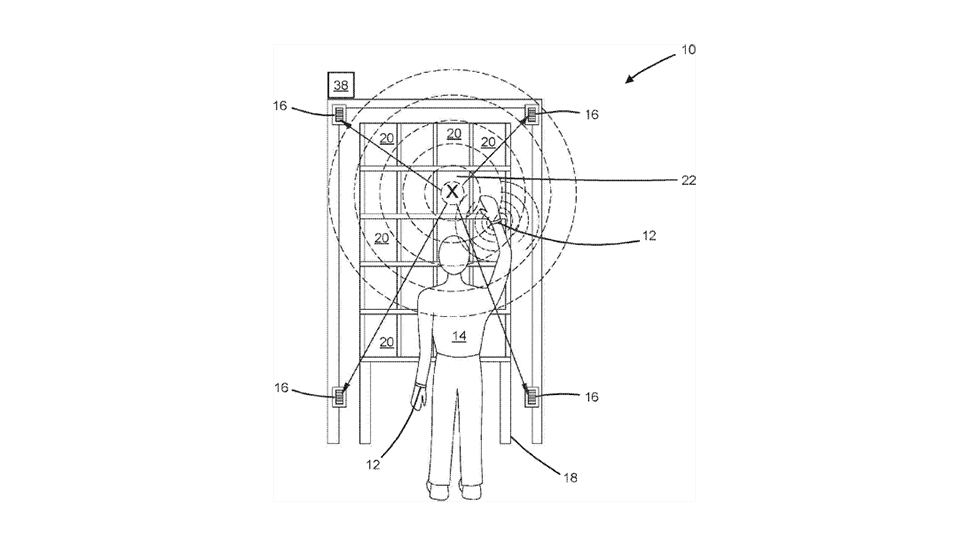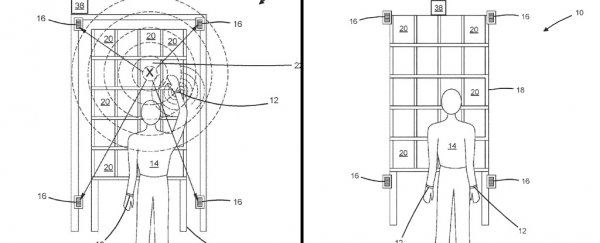The rise of smartphones and smart wearables means our days are more trackable than ever before, from the number of steps we take to the places we visit. Amazon seems very keen on the concept, having applied for a patent to keep very close tabs on its workers.
According to the patent documents, Amazon is working on a wristband that would measure exactly where the workers in its warehouses are putting their hands – like having a manager constantly looking over your shoulder.
For Amazon though, it's all about helping its staff: the bands would know their position in relation to products being shipped, and could buzz if a worker put something in the wrong place. They could even help guide employees' hands to the right spot.
 (USPTO)
(USPTO)
These futuristic wearables would use a combination of ultrasonic sound pulses and shortwave radio transmissions to communicate with nearby objects and work out where they were, and thus where the warehouse workers' hands are.
"The ultrasonic unit is configured to be worn by a user in proximity to the user's hand and to periodically emit ultrasonic sound pulses," reads the patent. "The ultrasonic transducers are arranged relative to the inventory bins and configured to receive the emitted pulses."
If you have a few privacy alarm bells going off in your head, you're probably not alone, but this seems to be the kind of world we live in now.
It's worth noting that even though Amazon has been awarded patents for this system, that's no guarantee these bands will ever see the light of day. Companies often apply for patents as part of research projects, and those projects don't always come to fruition.
However, this would seem to be the sort of tech Amazon is keen on developing, as it looks to make the process of getting anything to your front door even faster.
"Modern inventory systems, such as those in mail order warehouses, supply chain distribution centres, airport luggage systems, and custom-order manufacturing facilities, face significant challenges in responding to requests for inventory items," continues the patent document.
"As inventory systems grow, the challenges of simultaneously completing a large number of packing, storing, and other inventory-related tasks become non-trivial."
In particular, Amazon says, the new bands are designed to be quicker, cheaper, and more effective than alternative methods of inventory management, like scanning barcodes or installing high-resolution cameras to track everything.
So if it knows where its workers' hands are, and where items are, and where inventory bins are, all in relation to each other, Amazon can manage its stock more intelligently.
Of course the same system could also be used to summon staff back from bathroom breaks and to tell them to get their hands out of their pockets. Not that any of these monitoring purposes are mentioned in the patent.
Since it was incorporated in 1994, Amazon has grown to be a retail behemoth, accounting for almost half of all the goods bought online. Shifting that much stock is a huge undertaking, and one that Amazon is looking to automate as much as possible.
Last year an Aussie robot called Cartman picked up first prize in a contest to try and improve the automation systems in Amazon's warehouses – it can identify items and stuff them into the right containers.
Amazon is also looking into using autonomous drones to get its packages delivered, though it's not the only company with that idea.
We'll have to wait and see whether these wristbands get put into use to track worker movements in even greater detail. In the meantime we're going to cheer ourselves up by reading some reviews left by scientists on the Amazon site.
